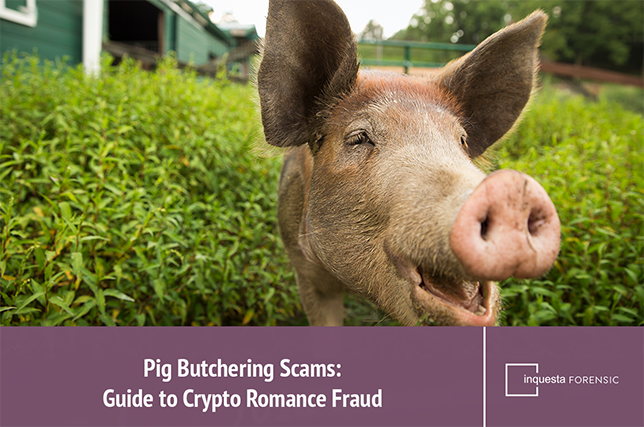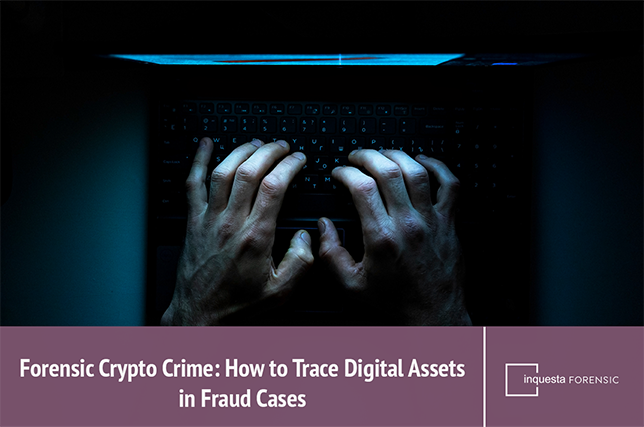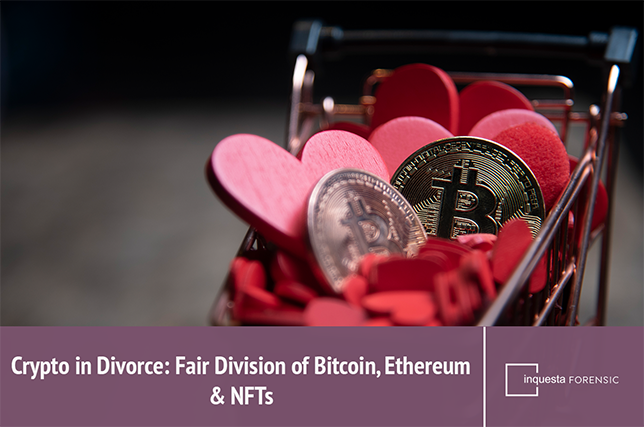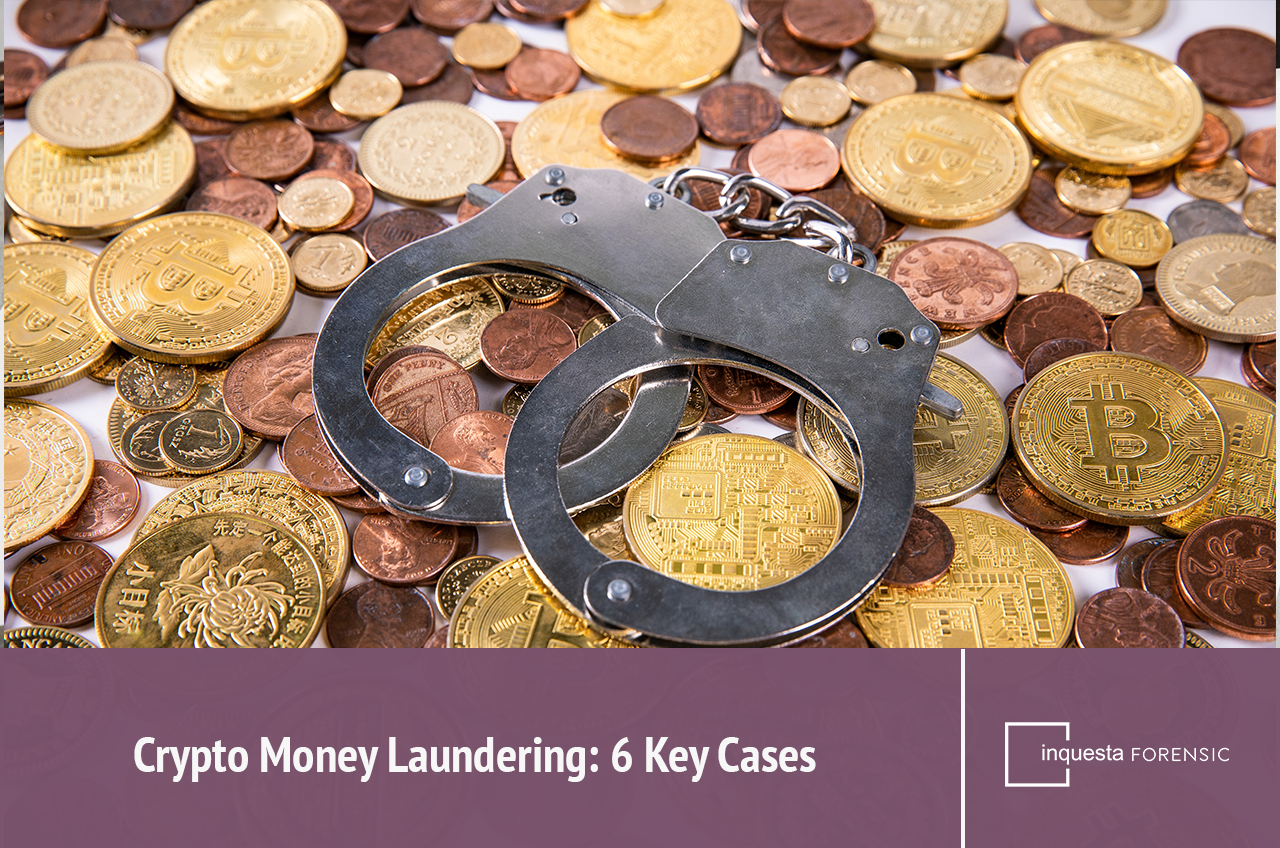With a turnover of almost £100bn, cryptocurrency is one of the UK’s fastest-growing sectors. People from all walks of life are drawn to the obvious allure of seeing their investment produce huge returns. However, perhaps inevitably, the obvious promise attached to the Blockchain does come with significant risks attached.
Whether you’re an experienced investor or a curious novice, the threat of serious cryptocurrency crimes such as crypto money laundering deserves your attention. The anonymity of these currencies makes them an ideal breeding ground for criminal enterprises to obscure both the origins and movements of illicit funds in order to defraud people who are simply looking to make money. Only the very best forensic accountants are equipped with the tools to separate these tainted funds from your own personal investments.
But what is crypto money laundering, how does it work, what techniques are utilised, and how can you combat it? Join us as we discuss these topics and make it easier for you to spot potential threats on the horizon. Act with assurance and invest with confidence.
How Does Crypto Money Laundering Work?
Traditional money laundering involves depositing illicit funds in legitimate institutions to conceal its criminal origins. This typically follows a three-step process, although the stages can be combined or repeated in order to fully ‘cleanse’ deposits. These steps are known as placement, layering, and integration.
- Placement: The act of depositing ‘tainted’ money
- Layering: The use of the latest accounting tricks and transactions to obscure the origins of the deposit(s)
- Integration: The laundered funds are removed
For those wondering what crypto money laundering is, and how it is different to the traditional form of laundering money, in a nutshell the two follow the same steps. However, there are some distinct characteristics between the two.
Perhaps the biggest difference with crypto fraud is that the anonymity afforded by the medium means that placement won’t always be present, or traceable if it is. The ease with which investors can create free accounts means they can make countless lower value transfers using complex computer scripts.
Another factor that plays into the hands of crypto money laundering groups is the volatility of the currency itself. While there are difficulties proving links between lifestyle and wealth when criminals use traditional methods and techniques, the boom-and-bust cycles of the crypto market makes establishing these links significantly more challenging. In essence, it is much easier to explain away a sudden increase in wealth by investing in the volatile crypto market, than it is via traditional investments.
Common Forms of Crypto Money Laundering Technology
There are numerous forms of crypto money laundering technology, with the most common being mixers, tumblers and privacy coins. Mixers and tumblers are used to combine funds from different sources, obscuring their true origins. Meanwhile, privacy coins are anonymous by design. All of these tools make it easier for criminals to conceal the source and destination of their currency.
Here are the most common forms of crypto money laundering technology in a bit more detail:
Privacy Coins
Compared to other types of virtual currencies, privacy coins offer an even higher degree of anonymity. This makes them especially challenging to trace. While ‘traditional’ cryptocurrencies will have a link to traceable addresses, privacy coins are designed to conceal this information. As a result, it’s even more difficult to track the balances of individual addresses and monitor transactions between parties.
Mixing/Blending
Some forms of technology allow crypto money laundering experts to mix otherwise traceable currencies and hide their origins. To do this, coins from a variety of different users are transferred into a single account. This blended larger pot is then redistributed to other addresses, making it extremely difficult for anyone to trace the transactions back to their original owner.
Layered Networks
Users intent on crypto money laundering may choose to communicate on anonymous networks to hide their IP addresses and online activity. The most commonly used networks are Tor and I2P.
Other Popular Crypto Money Laundering Techniques
Privacy coins and mixing/blending are just the tip of the iceberg when it comes to crypto money laundering techniques. These include:
- Using offshore accounts to make it more difficult to trace funds
- Utilising financial services in jurisdictions with more lax anti-money laundering (AML) practices
- Converting ‘’tainted’ crypto to ‘clean’ cash via fiat exchanges.
- When different services are linked within exchange platforms (i.e. Binance), they use addresses provided by the exchange to access funds. This could be exploited by money launderers, especially when exchanges have lax financial regulations.
- Engaging in complex transactions across multiple exchanges to obscure money trails.
- Using a mix of legitimate and anonymous profiles to funnel money through betting websites
Blockchain AML (Anti-Money Laundering) Practices
Such is the prevalence of crypto money laundering that some users could unwittingly become implicated in a wider web of illicit funds. With billions of pounds going through this shady process every year in the UK alone, it’s important for crypto investors to understand Blockchain AML measures. Ultimately, these measures are designed to pinpoint risks and give greater transparency around the flow of transactions.
That said, it’s still early days for Blockchain AML, and regulations are a work in progress in many countries. Although there is a demand for more stringent measures to be taken by currency exchanges, the following techniques are already being used by some institutions.
Know Your Customer (KYC)
KYC checks are a familiar feature for anyone who has ever opened a bank account, taken out a mortgage, or made certain online payments. Essentially, this approach asks for forms of identification, such as drivers’ licences and bank statements, in order to verify a person’s identity and attribute a level of risk to their account.
This is the most common way for historical financial institutions to vet new customers, and it is expected to become a common Blockchain AML strategy among crypto exchanges.
Wallet Screening
Wallet screening involves verifying the identity of any individuals who use cryptocurrency wallets. Similar to KYC checks in traditional banking, it requires users to provide identification documents, such as passports and utility bills.
This process helps to ensure compliance with regulations, prevent money laundering, pinpoint and block potentially risky accounts, and assess the overall level of risk associated with the wallet holder’s transactions.
Transaction Monitoring
Our final form of Blockchain AML, transaction monitoring, identifies suspicious fund movements, which can safeguard entire crypto-using communities. By analysing transactions, institutions can assign risk scores to wallets, which gives users a much clearer understanding of who they’re dealing with. This process involves detecting any abnormal or unusual activities, which is crucial for maintaining a secure environment — and improving cryptocurrency’s reputation for trustworthiness.
If you want to find out more about the latest cryptocurrency scams — and how to combat them — check out our dedicated blog: 9 Common Cryptocurrency Scams.
Inquesta Forensic: Your Digital Guardian
Even with a deeper knowledge of what crypto money laundering is, from experienced investors to people who have been unfairly accused of money laundering — anyone can hit the rocks when it comes to cryptocurrency. While the appeal of reaping lucrative rewards is understandable, the dangers of being exposed to, or implicated in, criminal activity can make it a risky medium. However, there are specialists who can look after your best interests by employing the latest tools and most advanced techniques.
Inquesta Forensic provides all the guidance and protection you might need to handle all aspects of crypto fraud. Our credentials have helped us to expose complex networks and fraudulent enterprises, while offering assurance that anyone who has been caught up in a scam, or been accused of fraudulent activity, will benefit from the best possible tools needed to defend themselves. We have an extensive understanding of this developing medium and can use our cutting edge skills to shed light on even the most intricate movement of cash.
The team at Inquesta Forensic can act as your digital guardian in the fight against crypto money laundering, scammers and fraud. We have the knowledge and expertise required to both shield you from potential pitfalls and safeguard your investments. We’ve helped countless clients to trace and recover ‘lost’ assets, and are always on-hand to help you proceed with confidence.
For comprehensive advice about what our specialist team can do for you, get in touch today.
- The Essential Role of Forensic Accounting in High Net Worth Divorce
- How to Value a Startup Business: A Guide for UK Entrepreneurs
- Pig Butchering Scams: Guide to Crypto Romance Fraud
- Shareholders’ Disputes: How Business Valuation Helps with Shareholder Dispute Resolution
- 11 Costly Business Valuation Errors (And How to Avoid Them)










